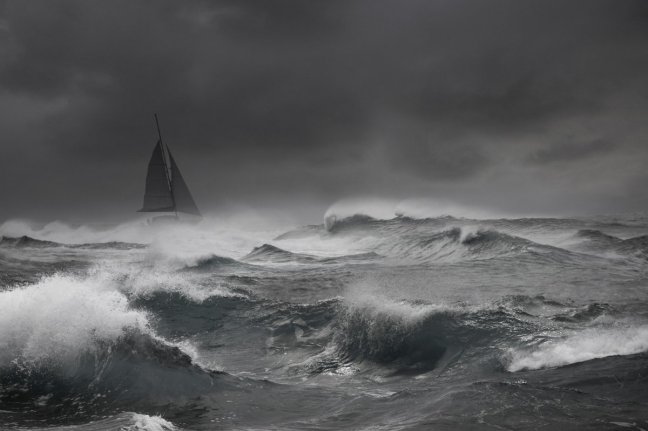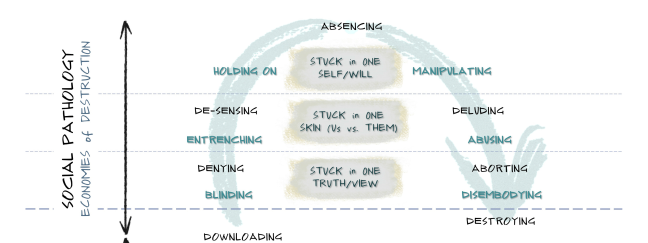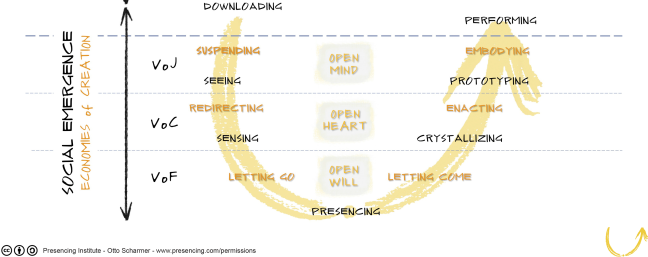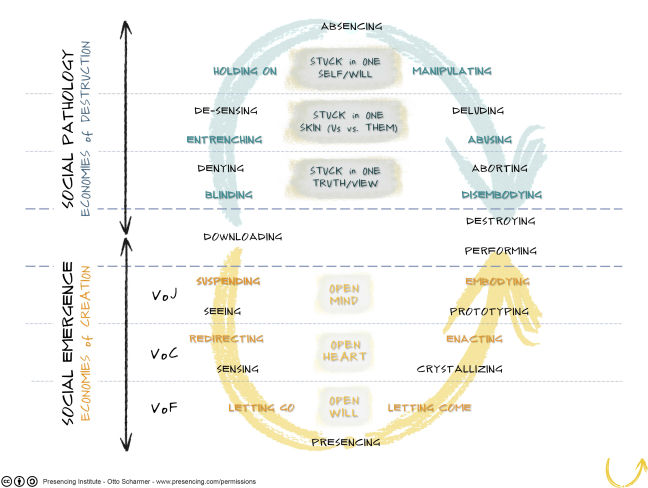The Soham warrior has to raise from the depths of her suffering, whatever the degree of it may be, and overcome her fears. She has to become an alchemist who transmutes prejudice into openness. Rage and anger into compassion and empathy. And fear into courage. Whoever wants to become a Soham warrior has to travel the path of love, wisdom and compassion in a journey to the depths of her own self. Her journey will be a difficult one. She will find challenges every step of the way. But the main obstacles won’t come from the world’s menaces, they´ll come from her own self.
The Prophecy
There is an ancient prophecy, so ancient that has almost been forgotten in the threads of time. A friend of mine, who is a world traveler and spirituality seeker talked to me once about it. An old monk narrated it to her while they had been walking to a little sacred town on the foot of the Himalayas, where she had gone to meditate.
The monk began to narrate.
There will be a time when the forces of evil seem to be determining the fate of human beings, who feel hopeless, and helpless to confront their power. Violence is everywhere, war prevails over peace, as does evil over goodness, treason over trust, intrigue over sincerity, lie over truth, cruelty over compassion, and suffering over contentment. Most people look to everyone else in distrust, being afraid of getting hurt physically or morally. Chaos seems to be the commanding force of the world. In most countries government is held by greedy and cynical men that look for their personal benefit, instead of the common welfare. Those in power have at their disposal armies of fanatic followers, willing to harm and even to kill anyone who opposes their bosses’ power. They have at their disposal weapons of abysmal destruction potential. Ordinary people feel that they have no hope to ever overcome that oppressing situation. The ambition and greed of the men in power don’t have limits. They not only profit from their corrupt way of government, but also have turned the Earth into a wasteland, because of the limitless extraction of its riches. Food is scarce and expensive, poor people eat left overs, when they eat at all. People die by the thousands of unknown diseases. Many people feel hopeless and wonder how much they will have to endure that suffering until something, anything happens. It is the kingdom of fear and darkness. Humanity has been pushed to the edge of time, driven by their choice of going through the path of power, greed and oppression. Instead of through the path of love, wisdom and compassion.
Is that the end of the world? My friend asked the monk.
The end and the beginning. The monk answered cryptically, and continued talking.
In this most obscure of realities a ray of hope will shine, the hope that the Soham warrior will come and free every one of their suffering, giving birth to a new era of peace, understanding and mutual respect. The legend says that the Soham warrior will have special qualities that will render the power of the rulers useless.
What are those special qualities? Asked my friend.
Later please, said the monk. And continued with the narration.
At that moment in time, most people will be like camels, they just sit there and take the load. There will be some lions, who will resist the power of the rulers with all their strength, but it won’t be enough to overpower them. Only the child can and will.
The child? Asked my friend.
Later, said the monk, somehow annoyed, and continued with the narration.
It will be the end of time and the beginning of time. It will be the no time. There cannot be a beginning without an end. In order for an era of peace to begin, the era of suffering most end. However, suffering is not easy to end. Only the sufferer, the victim, the weak, the meager can put an end to their miseries. They’ll do it by raising above their suffering once and for all. Their liberation doesn’t depend on the heroic works of some warrior. Yet, only the Soham warrior will be capable of doing it.
I am sorry. I don’t understand. Said my friend.
Yes. It is paradoxical. Isn’t it? Please, let me continue.
The Warrior
She is a virtuoso warrior. I will refer to the warrior as she, but it could be masculine or feminine. It doesn’t matter at all. She is wise and knowledgeable, courageous, magnanimous, moderated, and spiritual. She has gifts that allow her to show her virtuosity. However, in order to complete her job successfully, she will have to become a child again.
A child warrior? Asked my friend.
Not exactly, said the monk. Only a child has an open mind, an open heart, and an open will. No warrior can accomplish such a task without those three capabilities. Yet, by opening herself the way a child does, she becomes vulnerable. It is paradoxical, but her strength lies in her vulnerability. It gives her power beyond measure.
How can it be possible? Asked my friend.
Please, pay attention to this. Said the monk
The Journey
Soham means “I am He/That” in Sanskrit, meaning the ultimate reality. There is no Soham warrior as such. Not in the way people imagine, of a God sent type of hero who by wielding her powers is going to liberate us from all that suffering. The Soham warrior has to raise from the depths of her suffering, whatever the degree of it may be, and overcome her fears. She has to become an alchemist who transmutes prejudice into openness. Rage and anger into compassion and empathy. And fear into courage. Whoever wants to become a Soham warrior has to travel the path of love, wisdom and compassion in a journey to the depths of her own self. Her journey will be a difficult one. She will find challenges every step of the way. But the main obstacles won’t come from the world’s menaces, they´ll come from her own self. She will have to overcome her own voices of judgement, of cynicism, and of fear. In order to complete her journey successfully, she will have to go through several stages. And to go into those places, she will have to open doors, for which she will need special keys.
Seeing With New Eyes
The first stage in her journey is Seeing With New Eyes. In order to see with new eyes, she will have to open the door of her own mind. For that, she must be able to develop the ability to perceive reality differently than the ordinary people do. She will do that by being flexible and open to new experiences, and by handling ambiguity naturally. She will also need to develop creativity to look for new ways of doing things. Once the door of her mind has been opened, a whole new world will show for her to be seen from this perspective. However, her mind will shut close if she allows her voice of judgement to raise and her own idea of truth to become “the truth”. A rigid, judgmental, and single minded person won’t be able even of begin this journey at all.
My friend listened carefully and the monk continued talking. He did it calmly, and the low tone of his voice seemed to blend with the sounds of the surrounding forest.
Sensing From the Heart
Seeing things with new eyes paves the way for her to Sense From the Heart. However, she won’t be able to open the door to her own heart if she doesn’t disarm the secret armor that keeps it shut. It consists of her negative emotional reactions to events in her life. In order for her heart to be able to sense the reality around her from a whole new perspective, she needs to suspend those reactions. Once that armor is disabled, she will have access to the master key of Love. Love has many aspects to which she needs to be open. One important facet of love is the capacity to love not only other people, but to love herself too, and to accept love given to her. She also has to value close and intimate relations with others, and to acknowledge other people’s worth. In order to feel empathy and sympathy, and to treat fairly her fellow human beings, she has to be able to put herself in the other person’s shoes. A person who is confronted with adversity has to choices. One, is opening her heart to love and taking responsibility for getting out of that situation. The other, is blocking her heart with cynicism, negative emotions and blame, making others responsible for her misfortunes. The first path will allow her to continue her journey with a new degree of maturity and fortitude of character. The latter will lead her to the road of rage and anger, shutting her heart to sense love and all other related positive emotions as well. A person incapable of feeling love won’t be able to enter this stage of the journey, even if she has opened her mind.
What I am about to say now is of paramount importance. So, please listen carefully. Said the monk.
The Eye of the Needle.
In old Jerusalem, there was a door called the eye of the needle, because it had that shape and was small enough for one person to trough it. At dusk all the other doors were shut, and only the eye of the needle was left open. If a caravan tried to get into the city after that time of the day, each camel had to drop to its knees and be totally unloaded of its cargo. That metaphor was used by Jesus Christ when he wanted to illustrate that a person driven by avarice had to transform himself by dropping to his knees (being humble) and unloading his cargo, (letting go of old beliefs and behavior patterns) in order to go through the threshold that will lead him to the kingdom of God. Opening the mind and the heart allows the person to stand in front of the eye of the needle. However, in order to go through that threshold, she requires letting go of old habits and beliefs, specially her ego, allowing her humility and vulnerability to emerge. Having let go of what is not essential, sitting in stillness and in silence, she tunes in to her emerging future asking two basic questions. Who am I? What is my work? From that space of nonjudgmental listening, she’ll feel her attention expanding and connecting with a deeper place of inner knowing. In awe and wonder, she observes her emerging future as it is beginning to unfold. Once that connection has been established, she will begin to act in her intention to bring into reality that emerging future. A new Self has emerged, and she will be another person from now on. Nevertheless, this new Self isn’t in anyway a permanent presence. In order to remain in that space of knowing, she will have to make a conscious and continuous effort. Being judgmental, and experiencing negative emotions, such as fear, rage, anger, will return her to her old ego self and to her former ways of behaving.
My friend was so concentrated in the narration that she lost the sense of time. She was speechless too.
The monk continued.
The Manna in the Desert
Having crossed the threshold to her emerging future, and having left behind her old self, she will need to open the door of her will to keep her new Self present most of the time. Her courage will allow her to swim against the current of normal existence and behavior, and to sustain her intention over time. It won´t let her hope fade either, because that will be the beacon signaling to her the way to her best possible future. And by being true to her intention, she will keep her reserve of zest and humor. Those are the manna that will give her enough strength to continue her journey, especially at times when she feels like wandering in a desert full of mirages.
The Keys to the Kingdom
Being true to one´s intention is a lifetime job, and a lifetime learning experience too. At times she will feel like going nowhere, because she has chosen to walk on the road less traveled. Nonetheless, the force of her sense of purpose will keep her going on her true path despite her fears. In moments of doubt, her integrity and genuineness will win the day. She is farsighted and deliberate, and she knows that she has to take risks, but she confronts them objectively. She feels gratitude for her blessings, for being and feeling alive, and for having had the opportunity to work for the greater good of humanity. She is trusting and forgiving, despite the possibility of getting hurt. While walking her path, more often than not, generally when she least expects it, doors will open for her that will take her to places in which she never would have imagined to be. Likewise, she somehow will be guided to meet people that will help her without even been asked to. Other people will seek her out to draw on her expertise and knowledge to help them to solve their problems. Those are the rewards of being in communion with the intention of the whole.
The monk fell into silence, as if he had nothing else to say. The only sounds were of their steps and of the wilderness. They walked in silence for a while and when they were arriving to the village, my friend spoke.
Can anyone become a Soham warrior?
We all are. The monk answered.
We are? What about the journey you were just describing?
We all are. The thing is that most people haven’t realized it yet. You realize it by three means. Your actions. Your values. And your suffering. Some people chose the last one, if they choose at all. The others will remain playing the role of victims, fighting among each other and against themselves. But if someone wants to realize her potential as a human being, she will have to make the journey that I just described to you.
I see. Could you please tell me to what kind of spiritual congregation you belong? Or what is the religion that you profess? It seems to me like this journey blends ancient philosophy with more actual, practical knowledge.
The monk stopped, looked at her and said. I don´t belong to any spiritual practice or religion. Nevertheless, I embrace them all.
Where is your congregation located? I would like to know more about your practice.
We are not located anywhere. And yet, we are everywhere.
How many of you are there?
We are the few.
Where can I find you if I want to know more of what you were talking about?
You have only one place to look for answers to your questions, and it is inside yourself. He made a reverence and walked away.
With love
Helio Borges
This story is a writing prototype for u.lab, that I did in dec. 24 2016. I am developing it further at https://medium.com/@hborgesg/the-xxi-century-warrior-part-vi-the-eye-of-the-needle-c98169323045 , which at this moment is a work in progress.
I express my deep gratitude to Otto Scharmer and his team of gifted collaborators at the ULab program at MIT, specially to Kelvy Bird, Julie Arts and Adam Yukelson.They are working hard to create a worldwide army of Soham warriors.
References:
U.lab: Leading From the Emerging Future. An introduction to leading profound social, environmental and personal transformation.
Positive Psychology Center. University of Pennsylvania.
















